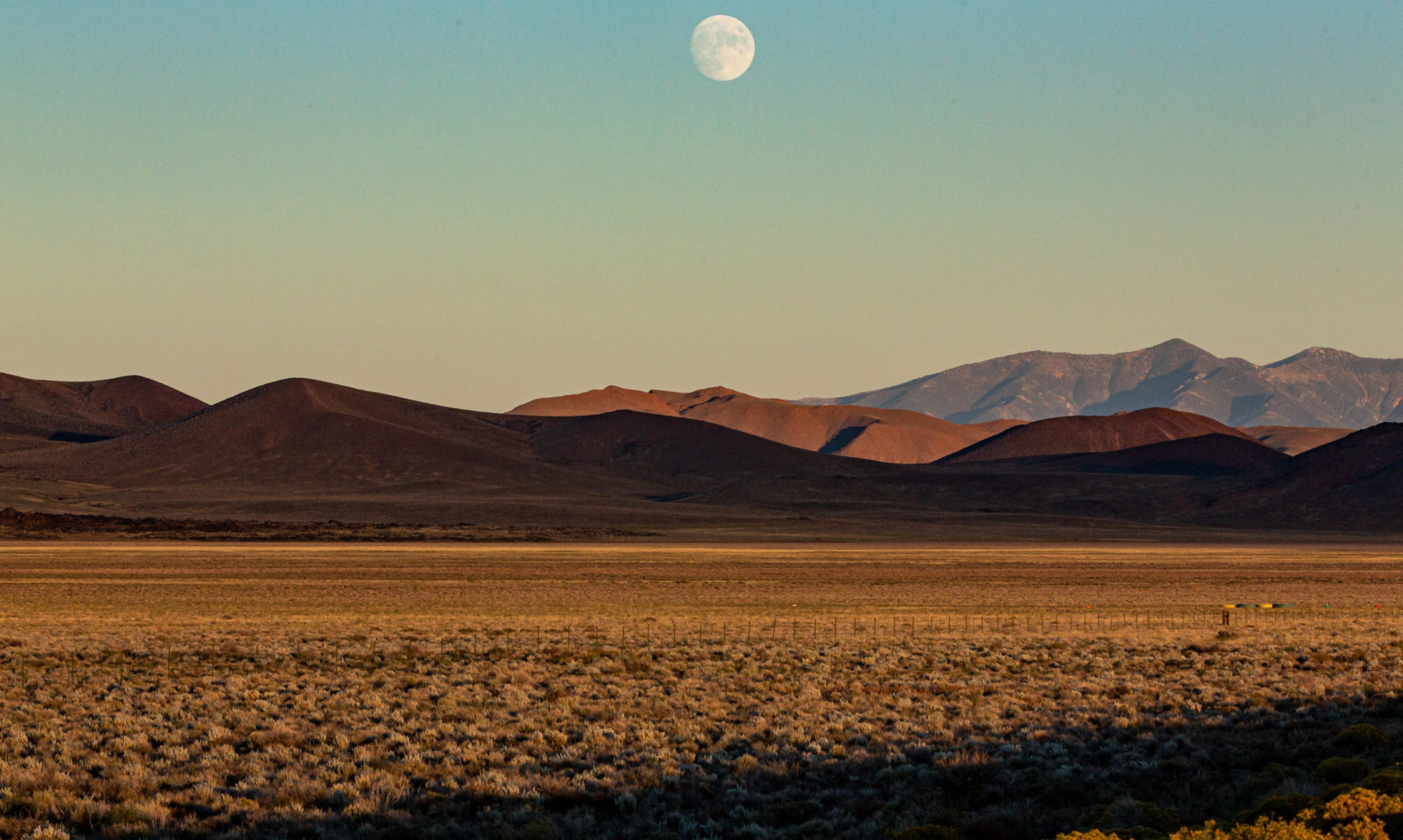 Monday: A beautiful, clear, hot north-central California autumn day. The wind was up all day, coming over the hills from the northeast. About an hour or so before sunset, I was walking down to the store and saw this striking arc of thin cloud, billowing out to the southwest; almost an illustration of what the wind seemed to be doing on the ground. It was breezy well into the night. I went for another walk after 10 o’clock, and the warm breeze seemed to be gusting down the western face of the hills. This is the kind of condition — Diablo winds, the local cousin of Southern California’s Santa Anas and a variation on what meteorologists call foehn winds — that makes you think about fire in these parts (the hottest, driest, windiest episode of Diablo winds that I can remember since I moved here in the mid-70s kicked up the morning of the big Oakland Hills fire in October 1991). High pressure centers, usually well to the north and east of the Bay Area, help set up a wind from California’s interior out over the coast. The winds start out warm and dry, and as they rush over the various spurs of the coast ranges and descend the leeward side, they get even hotter and drier.
Monday: A beautiful, clear, hot north-central California autumn day. The wind was up all day, coming over the hills from the northeast. About an hour or so before sunset, I was walking down to the store and saw this striking arc of thin cloud, billowing out to the southwest; almost an illustration of what the wind seemed to be doing on the ground. It was breezy well into the night. I went for another walk after 10 o’clock, and the warm breeze seemed to be gusting down the western face of the hills. This is the kind of condition — Diablo winds, the local cousin of Southern California’s Santa Anas and a variation on what meteorologists call foehn winds — that makes you think about fire in these parts (the hottest, driest, windiest episode of Diablo winds that I can remember since I moved here in the mid-70s kicked up the morning of the big Oakland Hills fire in October 1991). High pressure centers, usually well to the north and east of the Bay Area, help set up a wind from California’s interior out over the coast. The winds start out warm and dry, and as they rush over the various spurs of the coast ranges and descend the leeward side, they get even hotter and drier.
 Tuesday: There was word late Monday that a fire had started earlier in the day up on the border of Yolo and Napa counties, a lightly populated area a good 70 miles or so north-northeast of here. Though the acreage wasn’t large when I heard about it — a few thousand acres — what got my attention was the number of tanker planes and helicopters the California Department of Forestry and Fire Protection had already assigned to it — something like a half dozen planes and 10 choppers. That’s major. Those dry winds, which calmed down here overnight, apparently kept going up there, and now the fire has burned about 30,000 acres (almost 50 square miles, about the same area as San Francisco, if you’re wondering). By early afternoon, the air in the central Bay Area turned murky (the picture’s looking across to Treasure Island from the Ferry Building). Everything smelled lightly of smoke. It’s not expected to get better tomorrow.
Tuesday: There was word late Monday that a fire had started earlier in the day up on the border of Yolo and Napa counties, a lightly populated area a good 70 miles or so north-northeast of here. Though the acreage wasn’t large when I heard about it — a few thousand acres — what got my attention was the number of tanker planes and helicopters the California Department of Forestry and Fire Protection had already assigned to it — something like a half dozen planes and 10 choppers. That’s major. Those dry winds, which calmed down here overnight, apparently kept going up there, and now the fire has burned about 30,000 acres (almost 50 square miles, about the same area as San Francisco, if you’re wondering). By early afternoon, the air in the central Bay Area turned murky (the picture’s looking across to Treasure Island from the Ferry Building). Everything smelled lightly of smoke. It’s not expected to get better tomorrow.
(And before signing off, just want to acknowledge one of the best Web information resources I’ve ever encountered: the American Meteorological Society’s Glossary of Meteorology. Amazing.)
